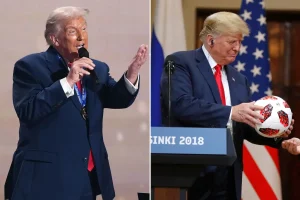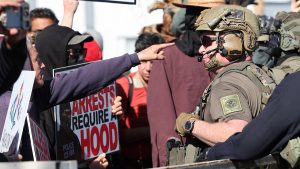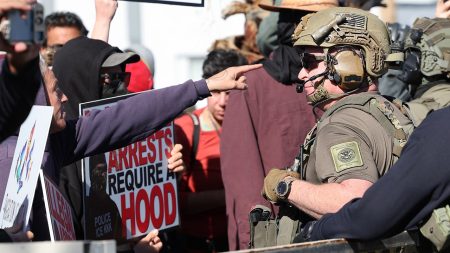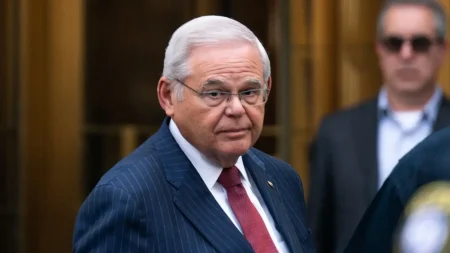Inside the Trump State Dinner: A Tableau of Power, Wealth, and Strategic Positioning
Elite Circles Converge as Seating Arrangements Reveal Washington’s New Hierarchy
In the grand tradition of Washington diplomacy, the seating chart at a state dinner serves as more than just a logistical necessity—it functions as a visible barometer of influence, a carefully orchestrated snapshot of who matters in the corridors of power. President Trump’s state dinner, meticulously planned down to the last placement card, offered a revealing glimpse into the new administration’s priorities and relationships. What emerged was nothing short of a sophisticated cross-section of America’s most influential figures, all strategically positioned in what can only be described as an elaborate dance of access and proximity to presidential power.
The evening’s seating arrangement read like a who’s who of American influence—corporate titans seated alongside political heavyweights, longstanding allies interspersed with surprising newcomers to the Trump orbit. Industry leaders from technology, finance, manufacturing, and energy sectors claimed prime positions throughout the State Dining Room, their presence underscoring the administration’s emphasis on business acumen and economic strength. These captains of industry, many of whom had maintained complicated relationships with the President during his campaign, now found themselves breaking bread at the administration’s most prestigious social event. The proximity to power was unmistakable, as was the unspoken understanding that these carefully selected placements represented more than mere social courtesy—they signaled potential influence on policy discussions ranging from trade agreements to regulatory reform.
The Diplomatic Chessboard: Foreign Dignitaries Navigate New Relationships
The international contingent at the dinner presented its own fascinating study in diplomatic maneuvering. Foreign ambassadors and visiting dignitaries, traditionally accorded positions of honor at such functions, found themselves navigating a transformed diplomatic landscape where conventional alliance structures appeared to be in flux. Representatives from nations that had quickly embraced the new administration secured advantageous seating, while those from countries that had expressed reservations about the President’s foreign policy vision found themselves at more distant tables. “These placements aren’t accidental,” noted one veteran diplomatic observer who requested anonymity to speak candidly. “Every centimeter of distance from the head table communicates something about the current state of bilateral relations. It’s a spatial representation of where countries stand in the new order.”
The careful calibration extended beyond simple proximity to the presidential table. Strategic placement of certain ambassadors near cabinet secretaries with portfolios relevant to their nations’ interests revealed sophisticated planning that merged protocol with pragmatism. The United Kingdom’s representative sat within conversation distance of the Secretary of Commerce, while Japan’s ambassador found himself neighboring the U.S. Trade Representative—arrangements that facilitated informal discussions on pressing bilateral concerns without requiring formal meetings. Meanwhile, representatives from nations with more complicated relationships with the administration were seated in positions that required them to actively navigate the room if they wished to engage key decision-makers, creating a physical manifestation of the diplomatic work needed to strengthen these relationships.
Corporate America’s Calculated Courtship of Presidential Favor
Perhaps most striking was the substantial corporate presence throughout the dinner, representing a clear departure from previous administrations’ approach to state hospitality. CEOs who had publicly aligned themselves with the President’s economic vision secured prime positions, their companies’ substantial investments and job creation initiatives in American communities serving as apparent tickets to proximity. “We’re seeing a very direct correlation between corporate behavior and seating position,” explained Dr. Margaret Thornton, a political scientist specializing in executive influence. “Companies that have announced major domestic investments or repatriated overseas operations are being rewarded with access, while those perceived as outsourcing or opposing administration policies find themselves literally and figuratively at the margins of the event.”
This dynamic created visible tension among business leaders accustomed to wielding influence regardless of which party holds power. Several executives whose companies had taken public positions opposing administration policies on immigration, climate, or trade found themselves seated at peripheral tables—still present, but unmistakably distanced from the center of gravity. Conversely, previously less-prominent business figures who had emerged as vocal supporters of the President’s economic agenda enjoyed premium placements that signaled their newfound status. The message was unmistakable: in this administration, corporate access would be tied to alignment with presidential priorities. This approach represented a significant departure from the traditional practice of balancing corporate representation across sectors and political leanings, instead creating what one attendee described as “a reward system for business loyalty that was visible for all to see.”
The Social Signaling Behind Strategic Placements
Beyond the overt political calculations, the seating chart revealed fascinating social hierarchies within the administration’s inner circle. Family members occupied positions of unmistakable prominence, with the President’s children and their spouses strategically distributed among tables to maximize their engagement with key figures from various sectors. This arrangement effectively multiplied the President’s presence throughout the room, as conversations with family members were understood to carry special weight. Longtime personal friends of the President, some previously unknown in Washington circles, claimed seats that would traditionally go to policy experts or political allies—a clear indication that personal relationships trumped conventional credentials in this new power structure.
The social geography extended to media figures as well, with a select group of television personalities and publishers receiving favorable placement that reflected their supportive coverage. These media representatives—predominantly from outlets that had maintained favorable editorial positions toward the administration—enjoyed proximity to senior officials that would facilitate relationship-building and potential access. By contrast, representatives from publications that had produced critical reporting found themselves at more distant tables, if invited at all. “The message isn’t subtle,” remarked a veteran White House correspondent. “Support is rewarded with access, and access translates to better information. It’s a self-reinforcing system that incentivizes favorable coverage through these visible signals of inclusion or exclusion.”
Navigating the New Power Landscape: Implications for Governance and Influence
As the evening progressed, the carefully constructed seating arrangement revealed its true purpose beyond mere protocol—it served as a three-dimensional map of influence in the new Washington, one that attendees studied as carefully as any policy briefing. Those seeking to understand where they stood in the new order needed only to note their distance from the presidential table, their proximity to key decision-makers, and who they were positioned to engage during the evening. The resulting dynamics transformed simple dinner conversation into strategic opportunities, with guests leveraging their placements to advance agendas, forge alliances, or rehabilitate strained relationships.
For close observers of Washington’s power dynamics, the evening offered invaluable insights into how influence would operate in this administration. The traditional pathways of access through established political channels appeared diminished, replaced by a more direct system that rewarded loyalty, business credentials, and personal connections to the President. As guests departed the White House that evening, they carried with them not just memories of an elegant state function, but crucial intelligence about their place in the new hierarchy—information that would shape their strategies for engagement in the months ahead. In this sense, the state dinner accomplished something far more significant than diplomatic ceremony; it established the rules of engagement for those seeking to navigate the corridors of power in a transformed Washington landscape, where proximity to the President—both literal and figurative—had become the most valuable currency of all.










